If ever you’re in Brussels this summer, don’t miss Get Up, Stand Up – Changing The World With Posters (1968 – 1973) at the MIMA museum. I had never been to the MIMA before. Mostly because i’m lazy and crossing the canal seemed like a Herculean task when i’m in town with only a few hours and a long list of exhibitions to see. Well, that was a stupid excuse! MIMA is a wonderful place to visit. The art space is committed “to a culture that breaks down barriers and reaches out to a broad audience, reflecting the world of today and paving the way for the world of tomorrow.” That’s what most cultural centers claim to do these days but rare are those that fulfill these promises as convincingly as MIMA does. Not only did i see people from all ages and cultural background when i spent a few hours there but each of the visitors seemed to be genuinely excited about the exhibition.
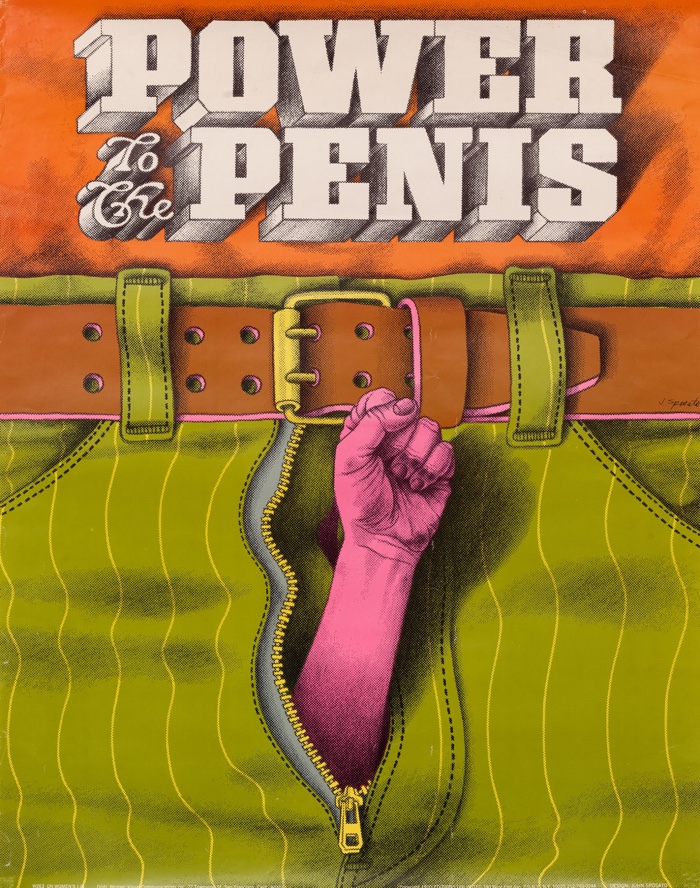
John Sposato, Power to the penis, 1970
MIMA’s programme is relentlessly surprising and attractive. Previous shows have looked at creative vandalism, invasive installations, comic book aesthetic, etc. Anything labelled ‘subcultural’, anything with humour, bite and a resonance with the contemporary finds a home in this ex-Belle-Vue brewery. There’s a reason why MIMA stands for ‘Millennium Iconoclast Museum of Art’.
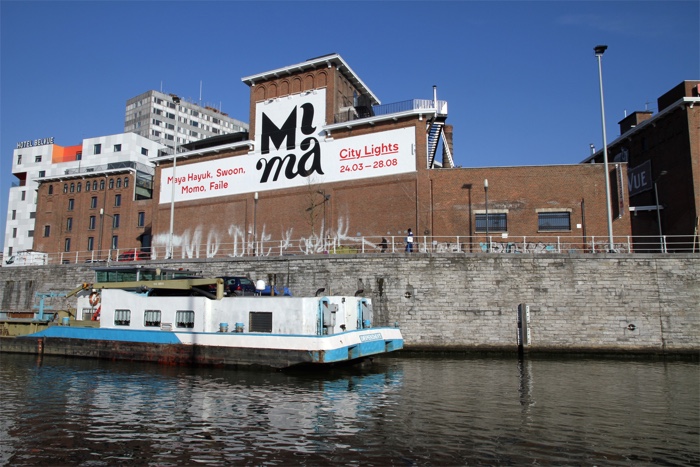
The MIMA museum along the canal. Photos by MIMA
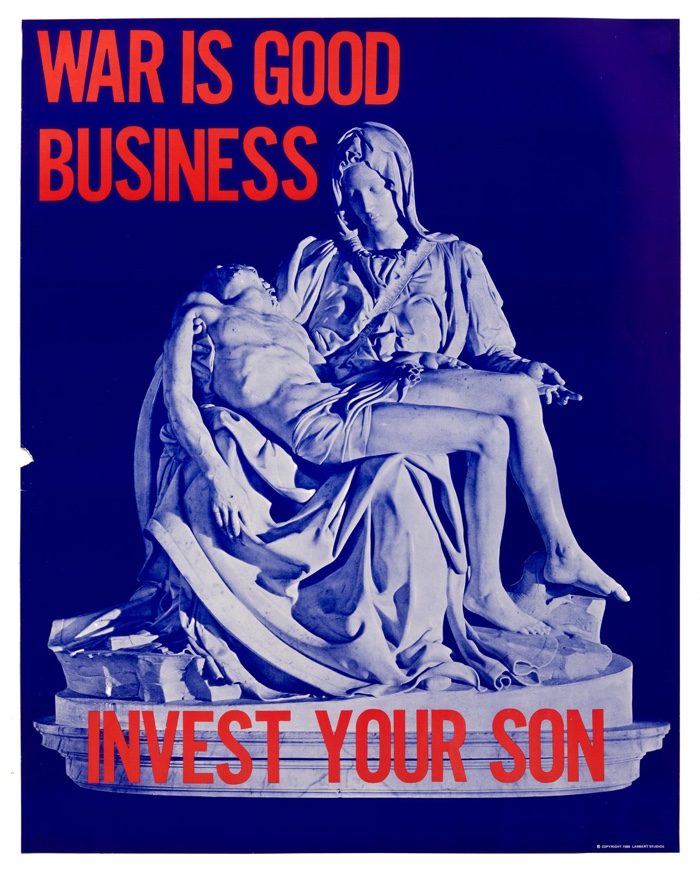
Lambert Studios, War is good business: invest your son, c. 1969
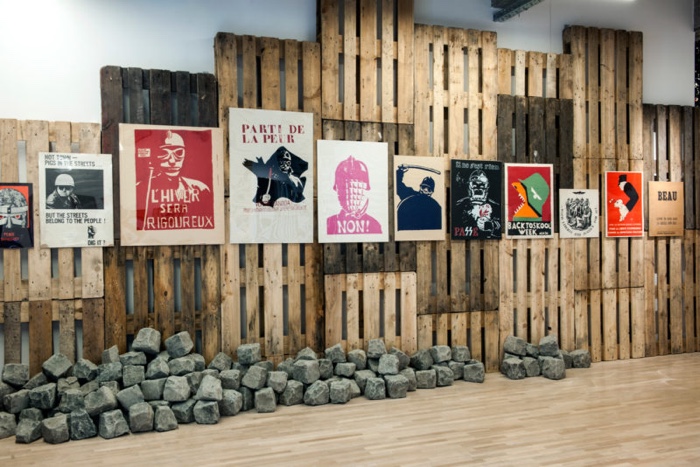
View of the exhibition space. Photos by MIMA
The current exhibition, Get Up, Stand Up, is dedicated to protest posters created between 1968 and 1973. These were six years of civil unrest where people demonstrated against war, racial discrimination, dictatorship, patriarchy, violence towards the environment, etc. Protestors had a powerful and new ally in their fights: screen printing (or serigraphy). The technique was fast, cheap and simple to learn.
The posters that used to be instruments of protest and antagonism have now become objects of aesthetic interest. In spite of that and in spite of being half a century old, the images and slogans have lost nothing of their strength, nor sadly of their relevance. Today we have hashtags and other social media tools but we’re still yearning for equality, freedom and justice.
The 400 posters from 30 countries have been selected by Michaël Lellouche, a film maker and a writer who, over the past few years, has collected more than 1600 posters printed during those 6 eventful years.
Here’s a pick of some of the posters exhibited. You can see more of them on MIMA’s website, i’m also copy/pasting their descriptions (with minor changes and added links):
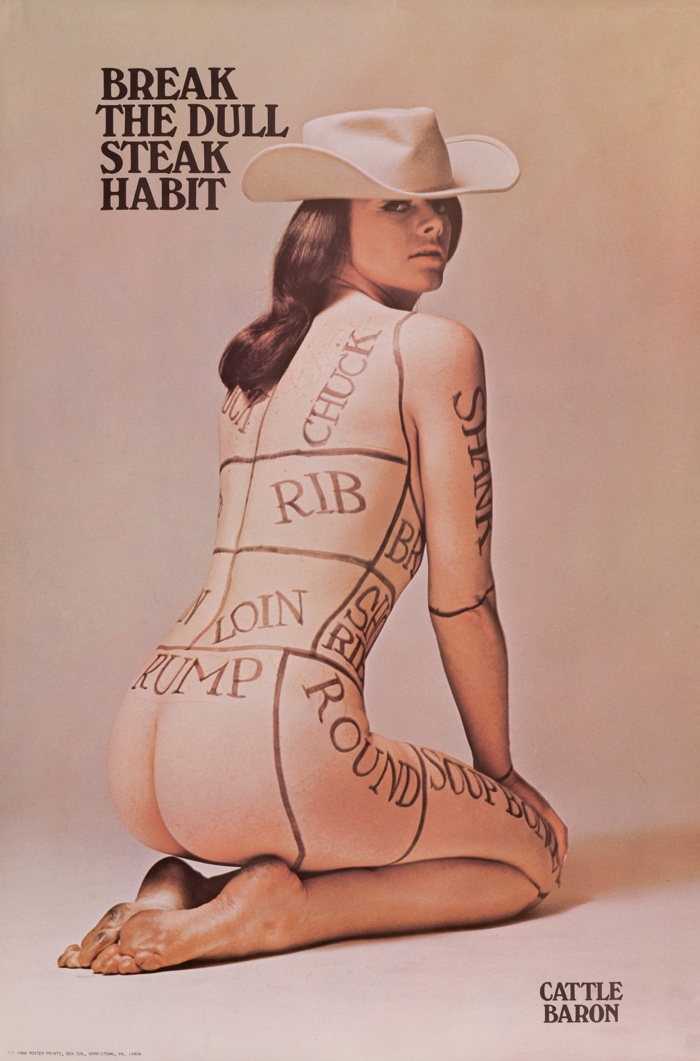
Anonymous, Break the Dull Steak Habit, also known as “Cattle Queen”, 1968
On the 7th of September 1968 in Atlantic City, a few hours before the election of Miss America, a hundred activists from the New York Radical Women binned various attributes of female submission: mops, false eyelashes, hair curlers, bras or issues of Playboy. They brandished placards in the effigy of historical heroines of feminism such as Lucy Stone or Sojourner Truth and this poster showing the degrading way beauty pageants turned women into little more than prime cuts of meat in “cattle markets”.
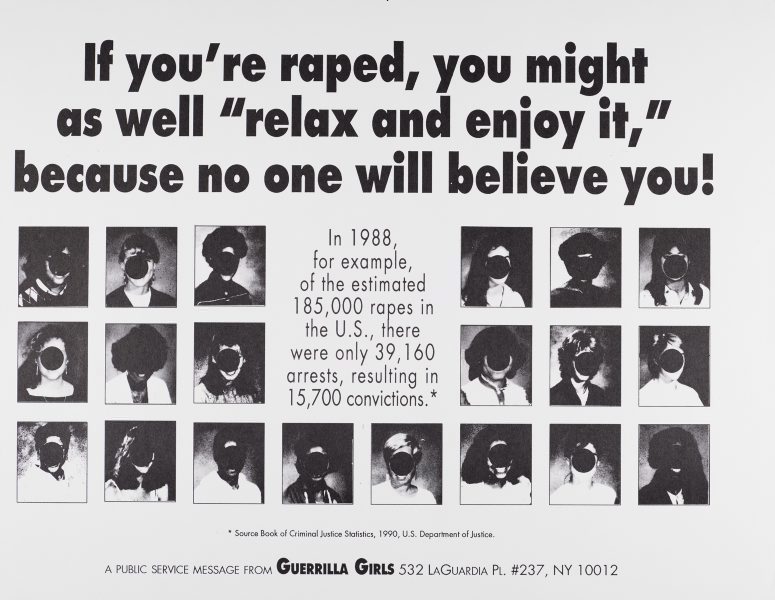
Guerrilla Girls, If you’re raped, you might as well “relax and enjoy it,” because no one will believe you, 1992
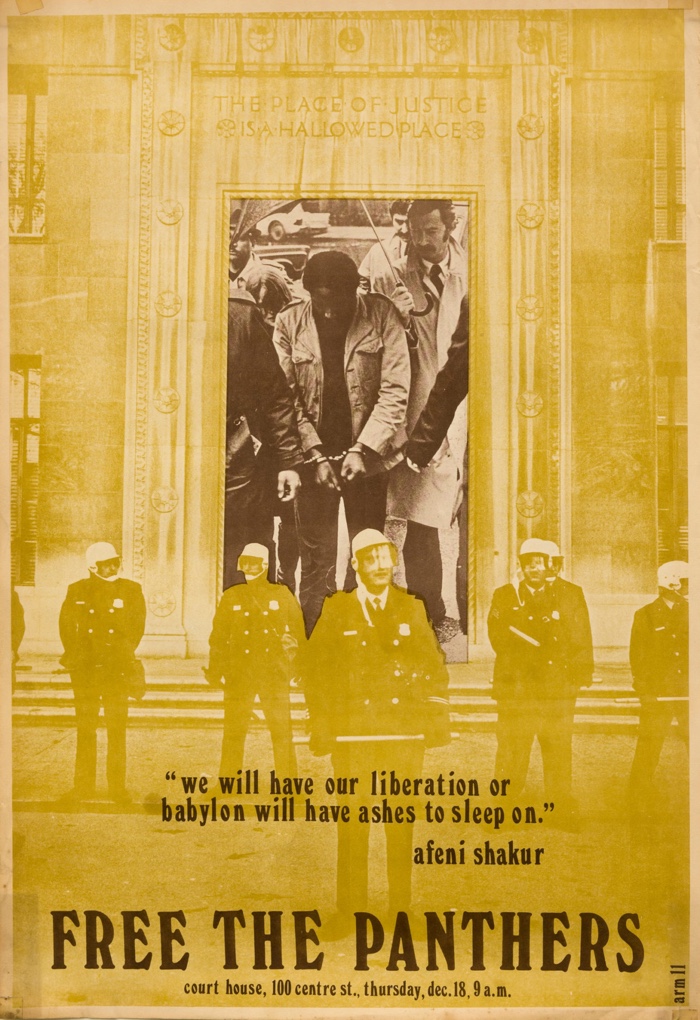
Free the Panthers
In January 1969, three attempted explosions failed in New York, targeting in particular two police precincts. On the 2nd of April, 21 people were arrested, all members of the Black Panther Party. They were charged with attempted bombing and conspiracy, and their bail was set at 100,000 dollars each. One of those arrested, Afeni Shakur, 24 (pregnant with the future musician Tupac Shakur), decided to defend herself without a lawyer during the eight-month trial. Her remarkable pleadings would mark public opinion. Due to a lack of evidence, all were acquitted in May 1971.
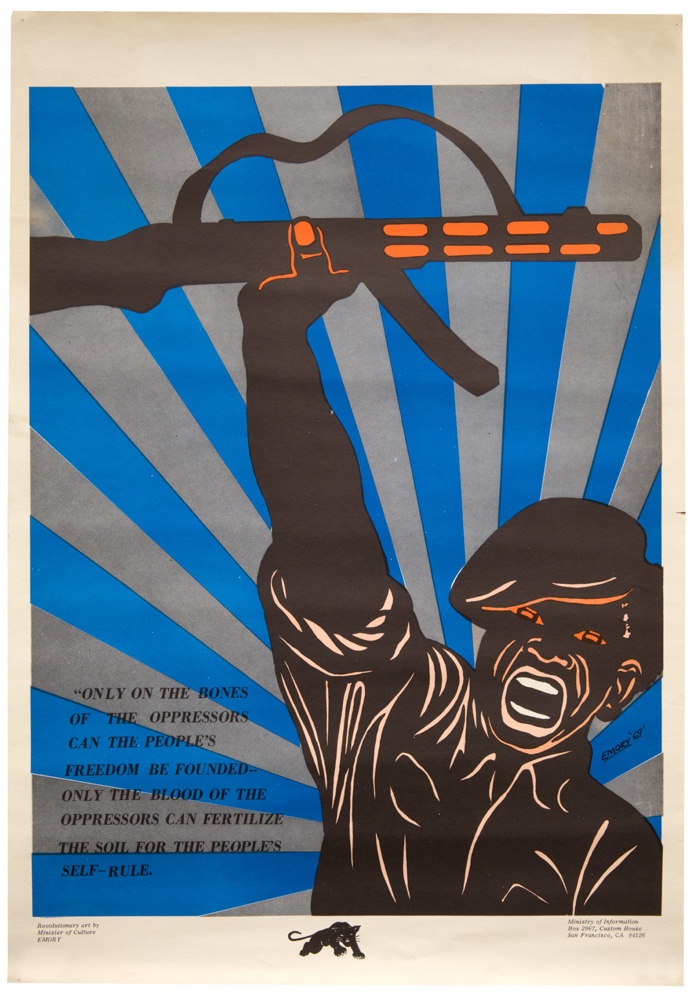
Emory Douglas, Untitled (On the Bones of the Oppressors), 1969
Emory Douglas became the resident artist of the Black Panther Party in the late 1960s. Appointed Minister of Culture, he created most of the posters and illustrations of the official weekly “The Black Panther”.
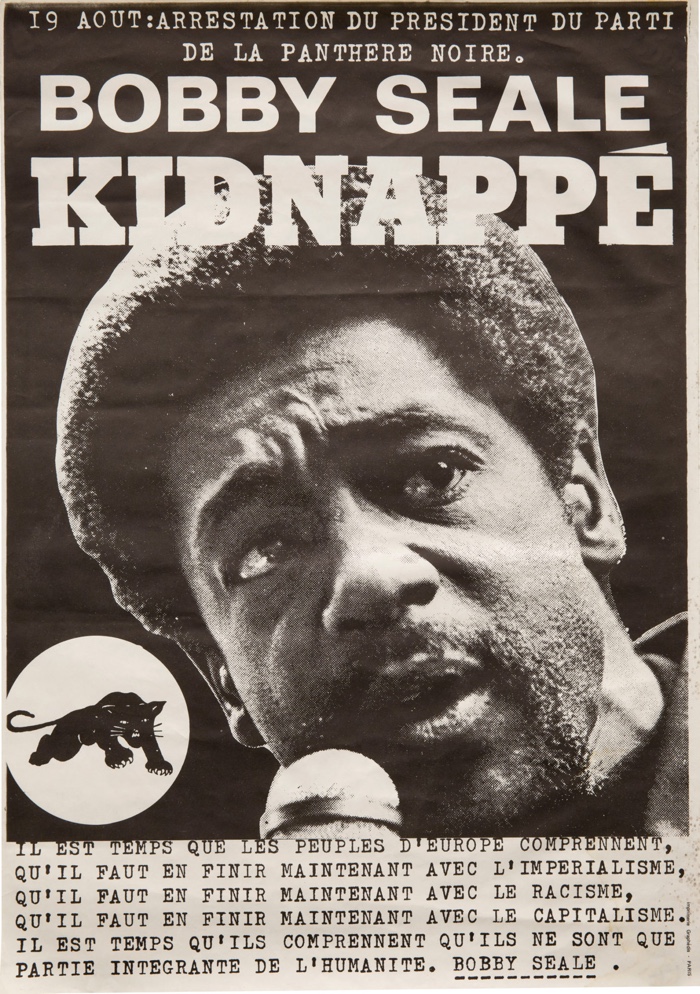
Anonymous, Bobby Seale Kidnappé
In August 1968, Bobby Seale, the co-founder of the Black Panther Party, was accused of conspiracy and incitement to riot. At the so-called Chicago Seven trial, having asked to defend himself, he was tied up and gagged in full court before being prosecuted in a separate trial.
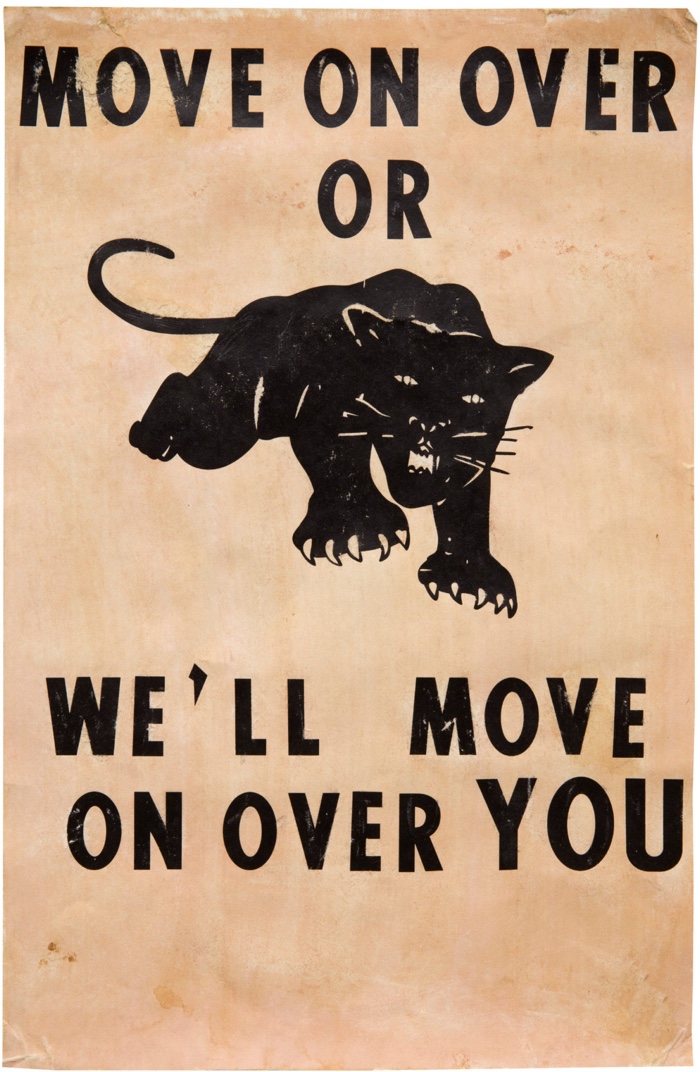
Anonymous, Move on Over or We’ll Move on Over You, circa 1967
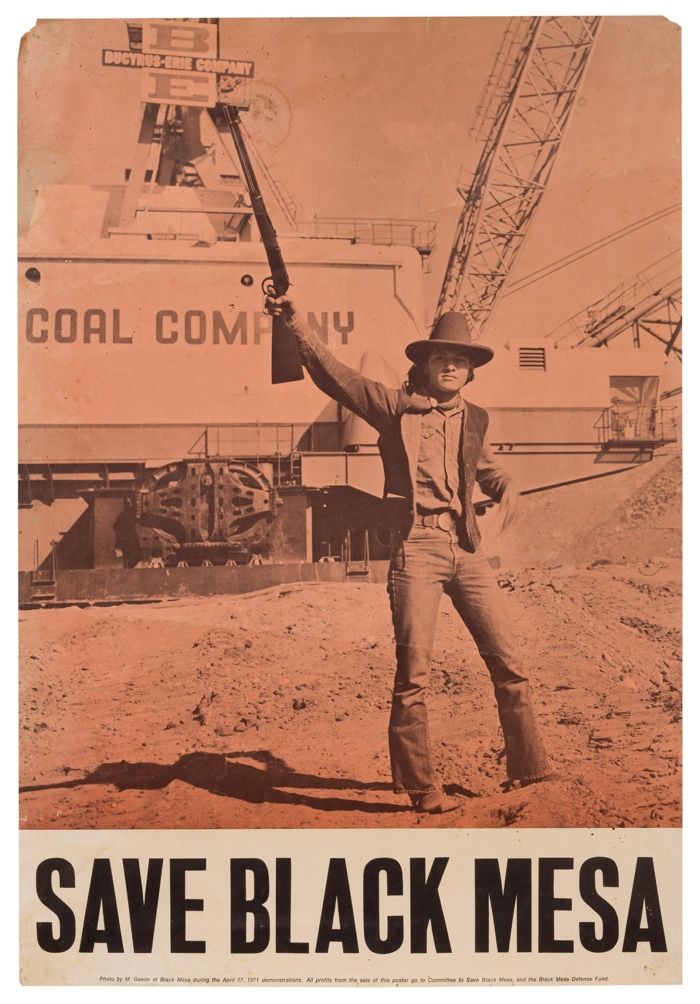
Anonymous, Indian power, 1971
On the 27th of February 1973, 200 Oglala Sioux Indians and members of the American Indian Movement (AIM) took over the small town of Wounded Knee, Pine Ridge Reserve, South Dakota. They were protesting against the alleged corrupt management of tribal leader Richard Wilson and the United States government’s failure to fulfill treaties with Native American people. Wounded Knee was chosen for its symbolic significance – it was the site of the massacre of more than 200 Indian civilians by the US military in 1890.
Marlon Brando, who was due to receive an Oscar for The Godfather, had his acceptance speech read out by Sacheen Littlefeather, an apache activist and the president of the National Native American Affirmative Image Committee. Brando boycotted the ceremony in protest of Hollywood’s portrayal of Native Americans and to draw attention to the standoff at Wounded Knee. His gesture relaunched media attention on Wounded Knee.
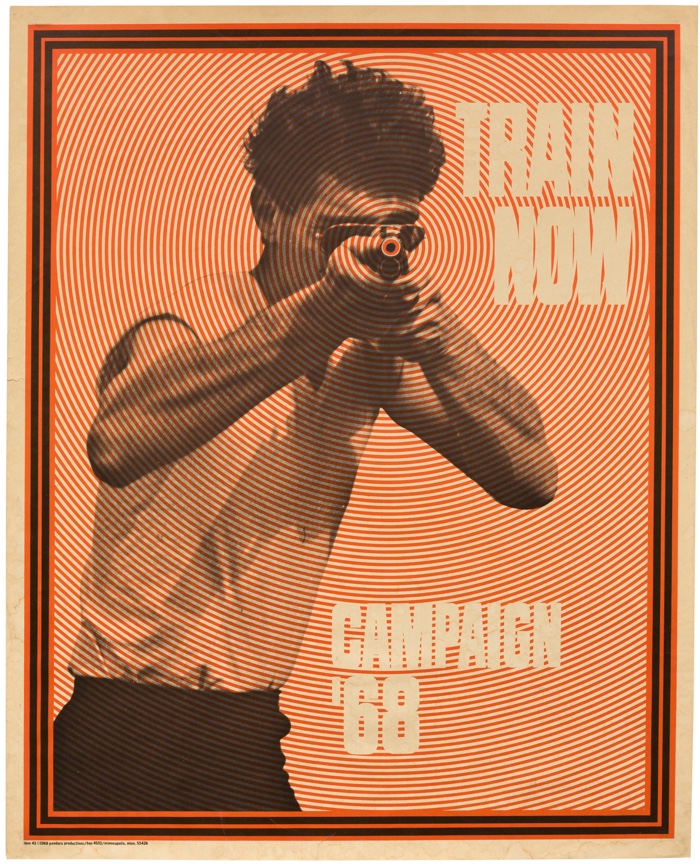
Anonymous, Train Now
In the middle of the U.S. presidential campaign, marked in the spring of 1968 by the assassinations of Martin Luther King and Robert Kennedy, this poster proved to be a hard-hitting and provocative one. The Vietnam War looked set to require more young soldiers. But who is shooting whom?
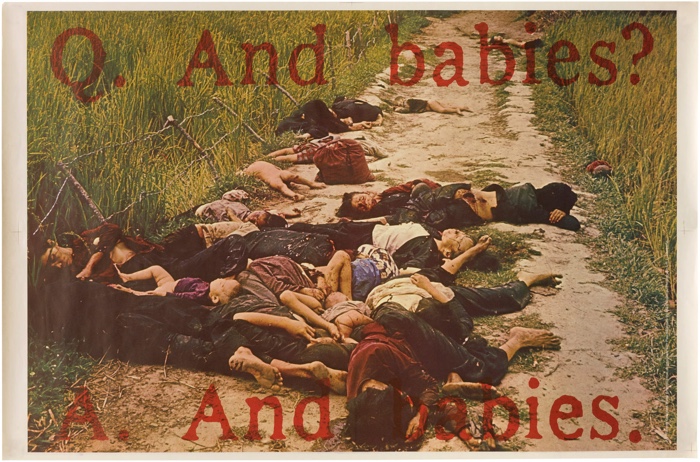
Anonymous, And Babies?
In October 1969, the Art Workers Coalition (AWC) was commissioned by the Museum of Modern Art of New York to create a poster denouncing the war in Vietnam. The AWC decided to use a photograph taken by the army photographer Ronald L. Haeberle after the My Lai Massacre. They then superimposed on the image the confession that Private Paul Meadlo made during an interview when he admitted that yes, babies were killed.
The MoMA refused to distribute the poster, deemed to be too shocking. The AWC printed 50,000 copies and during a blitz operation at the MoMA, on the 26th of December 1969, activists brandished it in front of Picasso’s Guernica, on loan by Spain. The symbol was unmistakeable: the Americans had joined the Nazis in their barbarism.
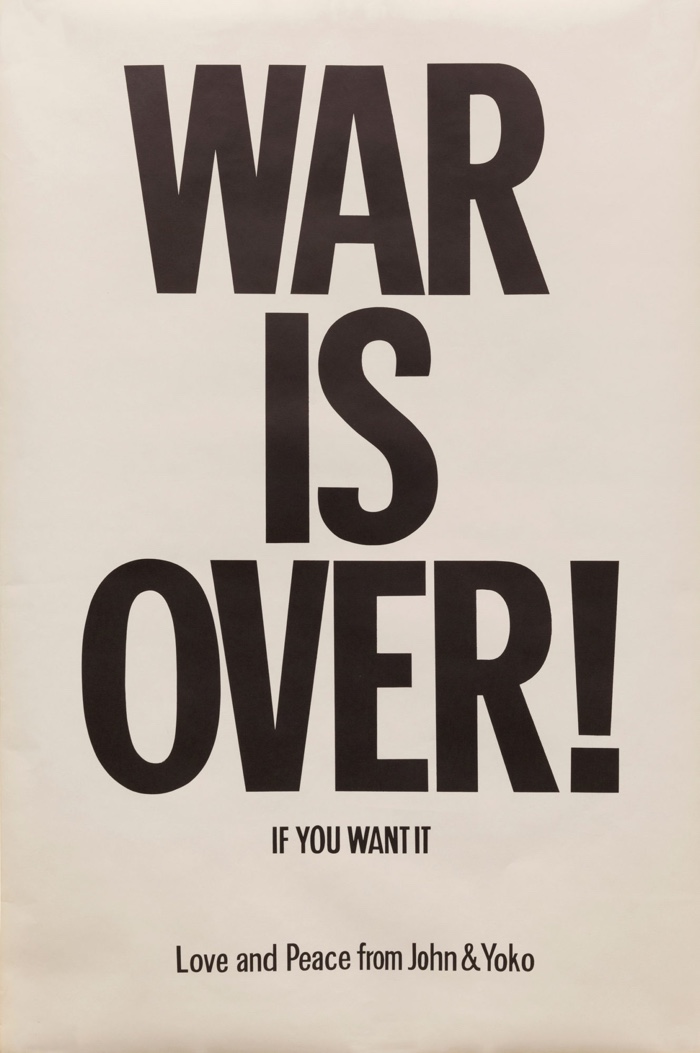
Yoko Ono and John Lennon, The War Is Over!, 1969
On the 15th of December 1969 New Yorkers discovered in giant letters on Times Square the information: “The war is over!” The small print tempered the good news. In this poster, John Lennon and Yoko Ono incite civil disobedience, encouraging people to be active rather than passive. Translated into several languages, the campaign was displayed in 11 cities around the world.
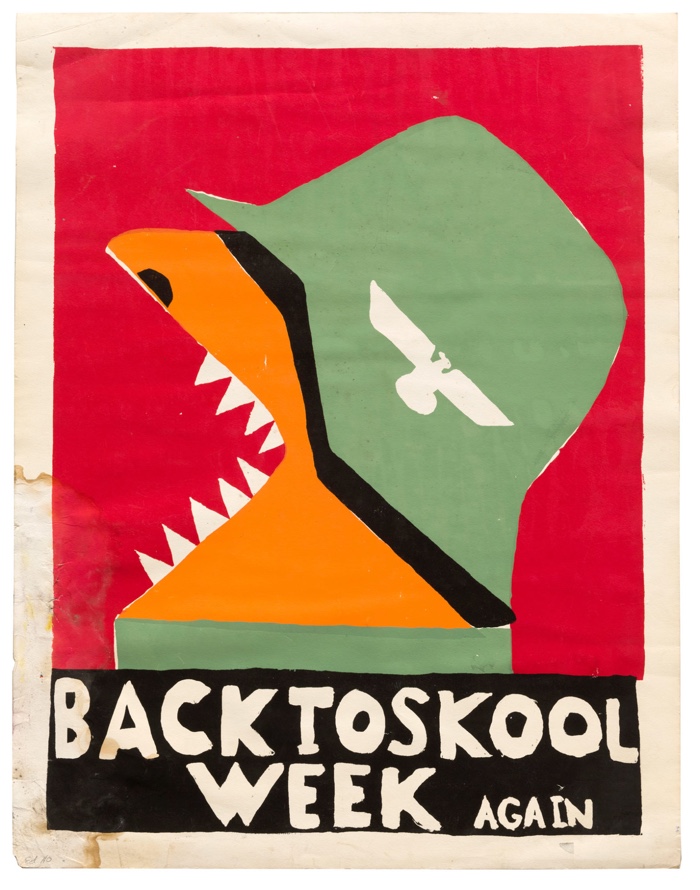
Dutch poster, by the anarchist environmentalist movement Provo
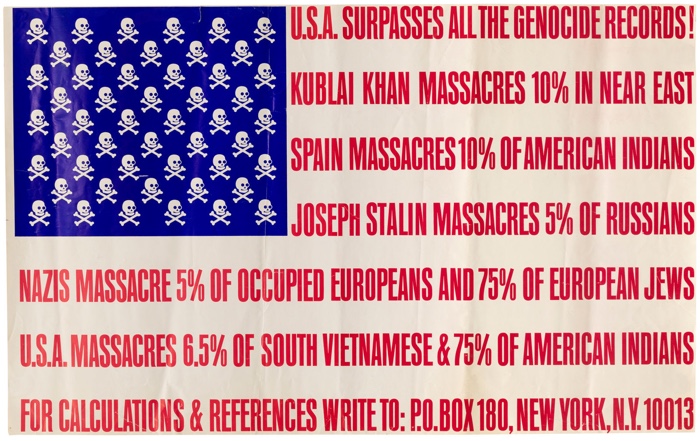
George Maciunas, U.S.A. Surpasses All the Genocide Records, c.1966
The American flag was also to come under the fire of foreign countries and American artists. George Maciunas, founder of the Fluxus Artistic Movement, created a flag denouncing the mass killings perpetrated by the United States. Thousands of copies of the poster went on to be sold with a leaflet listing the most morbid statistics.
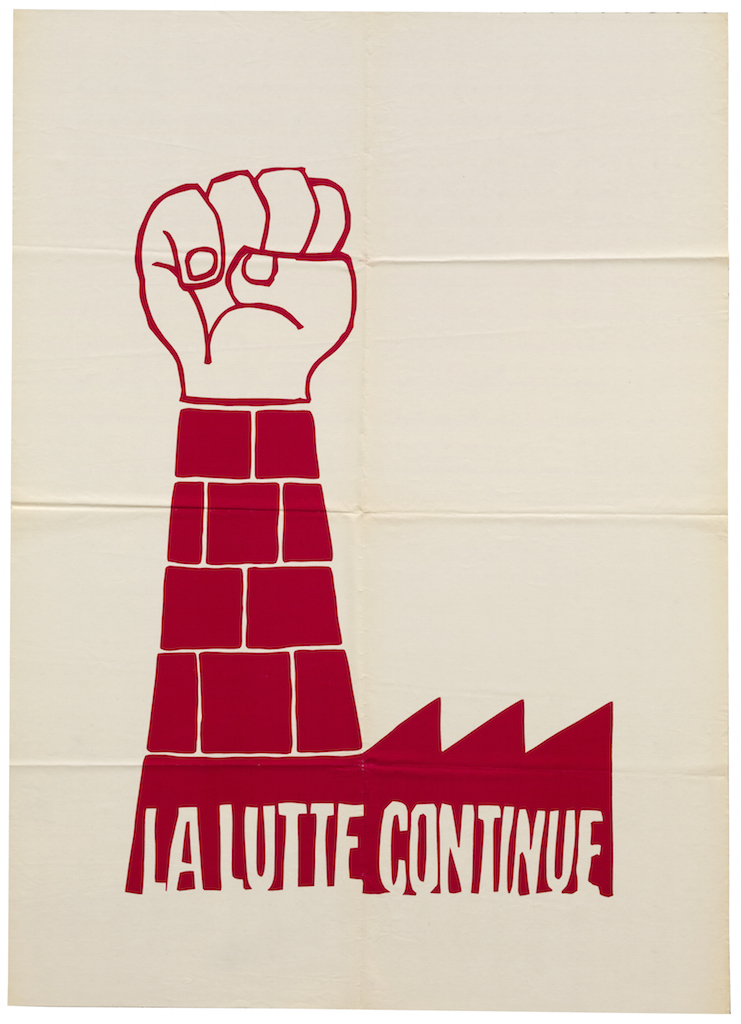
Atelier Populaire, La Lutte Continue, 1968
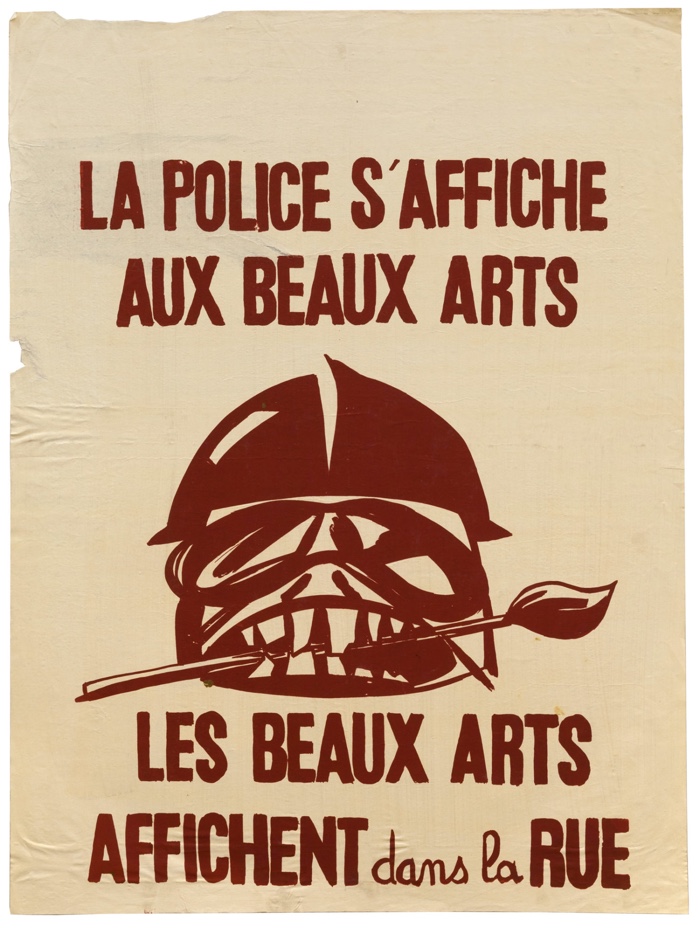
Atelier populaire, La police s’affiche aux Beaux-Arts, 1968
Last poster of the famous Atelier populaire, in response to the police raid in the premises of the Ecole des Beaux-Arts on the 27th of June 1968.
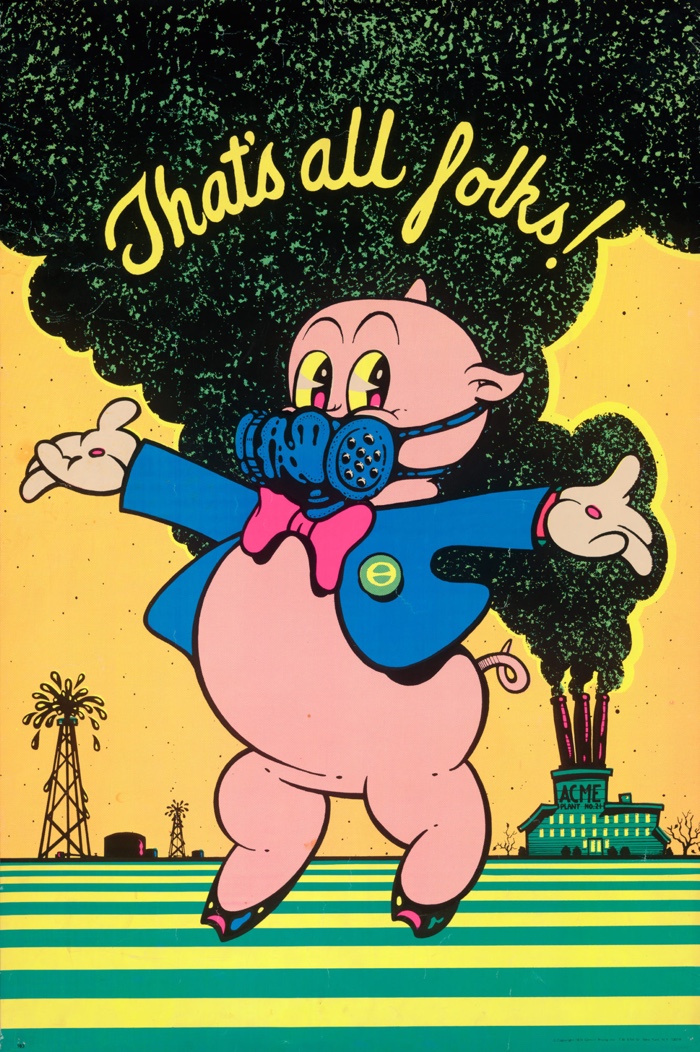
That’s All Folks!
Views of the exhibition space (all photos by MIMA):
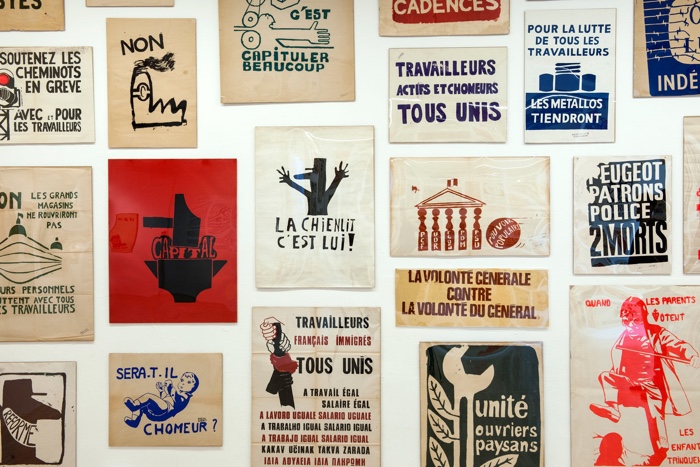
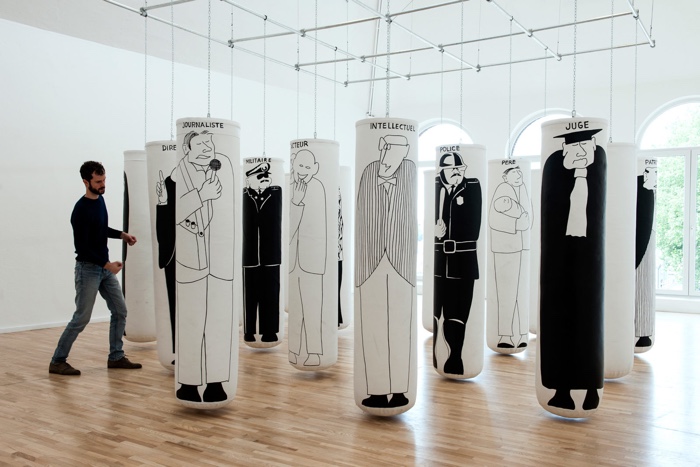
Julio Le Parc, Frappez les gradés, 1971
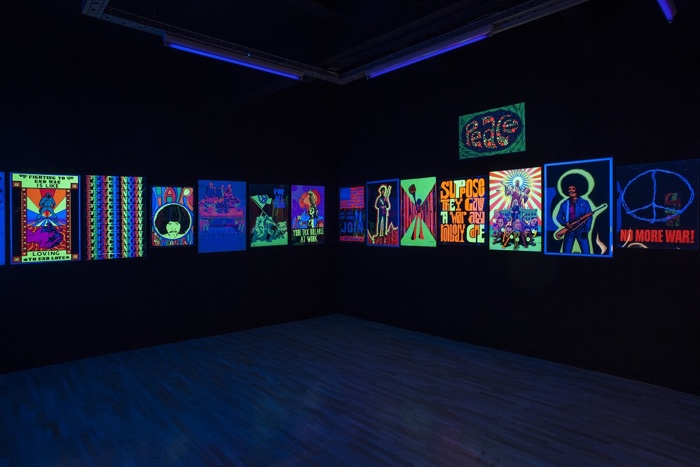
Get Up, Stand Up – Changing The World With Posters (1968 – 1973) is at MIMA in Brussels until 30 September 2018.
